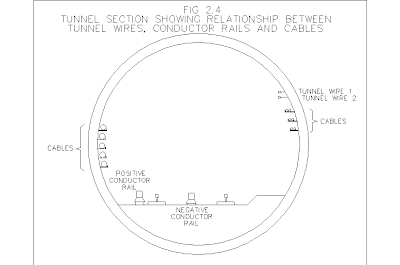In 'Visiting Signalboxes' I described how, in the late '50s and early '60s, I managed to visit (and unofficially operate) a number of mechanical signal boxes in the West Midlands. Most of this write-up is from memory - notes I made at the time are lost or mislaid.
Back in the '50s, the Stour Valley Line from Birmingham to Wolverhampton made a triangular junction with the double-track Princes End Line. The boxes controlling the triangle were Tipton and Bloomfield Junction (both on the Stour Valley Line) and Tipton Curve Junction (on the Princes End Line). The next box was Princes End, then the line continued to Wednesbury, where it joined the South Stafford Line.
I worked the adjacent box at Tipton Curve when the signalling was still absolute block but I didn't get to work Princes End box until after Wolverhampton Power Box had opened. Princes End became a fringe box to the Power Box and trains to and from the Stour Valley were 'sent' and 'arrived' by Train Describer. The train describers at fringe boxes were made by Standard Telephones and Cables and were largely electro-mechanical, using crossbar switches. Crossbar switches were used in telephone switching for a short period, before reed relay and electronic designs took over. I spent some time studying the design of the train describer equipment at Princes End. There was usually plenty of time in between trains for study.
By the time I knew Princes End, the line down to bank to Wednesbury had been singled and was operated by Electric Token. Originally, it had been double. I believe the line was singled partly because of subsidence in one area of the embankment, probably caused by an underground fire. In mining areas such fires seemed fairly common. At the time, there was also what seemed to me a rather perverse fashion for reducing track maintenance costs by singling double track sections. I was never convinced that this idea was justified, taking into account the signalling complication at each end of the single line where it rejoined normal double track and the operational problems of having to wait for a train in one direction to clear before a train could pass in the opposite direction.
The box was of standard L&NWR construction, with the frame nearest to the track. Behind the frame, set in the floor, were a number of Annett's keys which could be released to allow a train to work at one of the private sidings controlled by Princes End. I think I only remember Austin's Siding being used and that infrequently. The display for the Train Describer to Wolverhampton sat on the block shelf.
The electric token machine for the single line to Wednesbury sat on a small table on the back wall of the box, next to the desk for the Train Register Book. Princes End was the only box I worked with electric token working, so I found this of interest and studied the operating principles. This relatively-simple equipment had brought considerable safety to the operation of single lines but, like any system invented by man, could be defeated by not sticking to the procedures. The head-on collision at Abermule in 1921 (see Wikipedia article) is an example of this.
There was a level crossing at the Wednesbury end of the box, controlled from a gate wheel which I found heavy to operate. Beyond the level crossing were the long-derelict passenger platforms. I think the passenger service was discontinued in the 1930s.
When the electrification of the Stour Valley was in progress, the Princes End Line was often used as a diversionary route for passenger trains at weekends. I can't remember details, but 'Sunday Stroll to Stafford' describes one trip I made.
I was at Princes End Box one day when the line was used for an emergency diversion. Mid-morning, there was a Scottish express from Birmingham to Glasgow, IS61, which was booked to run along the Stour Valley Line. One day, the North Stour became blocked (probably the day a freight tried to leave the down sidings at Spring Vale before the road was set. The steam loco ended up 'down the bank' and wagons were strewn around. Wish I'd seen it). 1S61 had already passed Winson Green (where it could have been diverted onto the Soho Road Line) so 'Control' decided to divert it onto the Princes End Branch. I don't know where it went afterwards - probably Rugeley then Trent Valley Line to regain its proper route at Stafford. To my surprise, '1S61' popped up on the train describer so I was able to send a 'four-beater' (express) to Wednesbury and extract the single line token (an overgrown 'lollipop'). These were handed directly to the loco crew from the narrow landing outside the front of the box principally used for window cleaning. There was no 'loop' as sometimes used to simplify the exchange. As 1S61, headed by an English Electric 'Type 4', roared towards the box, I was horrified at the speed the driver was maintaining and I had visions of either breaking a finger or dropping the token. In fact, I made the exchange OK but I still remember my fear!
There's a series of fairly technical articles on the electrical signalling controls starting with Princes End Electrical Controls (Part 1).



















